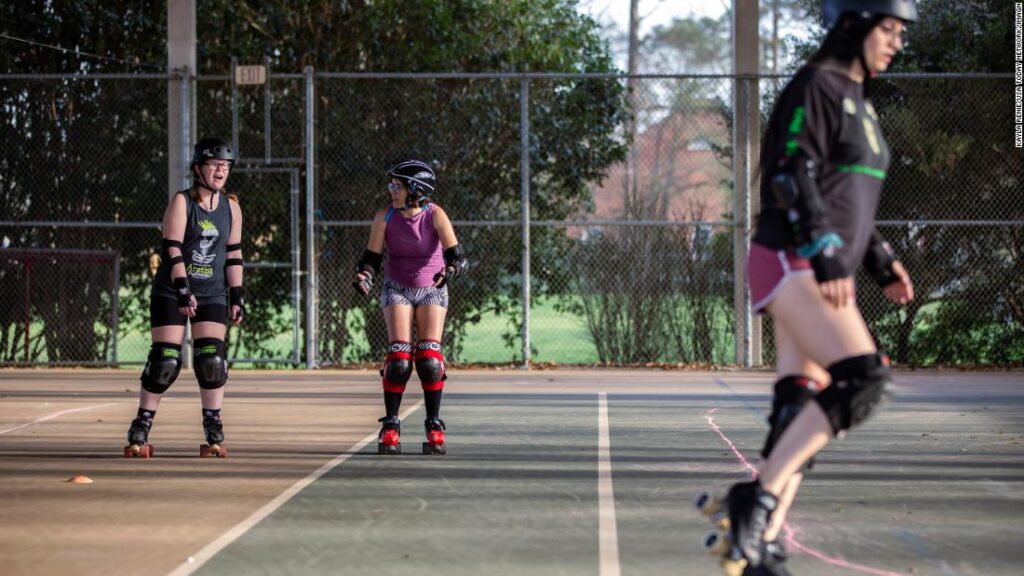Pushing off one foot and then the other while skating requires that you use your glutes, hamstrings, quads and calves each time you pick a foot up to move. Alternatively, when you glide with both feet on the ground, your lower body still works, but it stabilizes you rather than pushes you forward. This type of movement is like using an elliptical or other cardio machine at the gym but even better because your body is working with both feet stationary as well as both feet in motion. Plus, the stability required in the ankle, calf and foot to balance on one elevated skate each time you take a stride is more intense compared with having your foot flat on the ground while running or on a cardio machine.
Before hitting the outdoors with your skates, there are a few things to consider in addition to the benefits of skating. Read on for tips to get started safely.
Benefits
Roller-skating and rollerblading build core strength and improve stability in the lower body. Skating also improves upper body strength and mobility due to the pumping and swinging motion of the arms. As you’re rotating your torso by using your core muscles, you’re using your shoulders and arms to help propel you forward. The legs and glutes push you forward, too. Not only are you moving forward, but also you’re moving side to side, which improves hip mobility and strength. Your quads, hamstrings, calves, glutes and hips work in unison to start skating, stop skating, speed up and slow down.
Getting started
As a fitness coach, I always recommend having the right gear before you start a new workout activity. Whether you rent skates or buy them, test out roller skates and in-line skates to see which you feel more comfortable with.
Roller skates have four wheels that are lined up like car wheels: two in the front and two in the back. The wider base makes these skates a little bit easier for beginners. When standing still, you’ll feel more stable because of the base of the skate. However, it’s more challenging to speed up with roller skates compared with in-line skates.
Most in-line skates typically feature four wheels lined up front to back and a break behind the back wheel, and the upper boot of the skate fits snugly. The wheels allow you to have a smoother ride and skate faster.
As a kid, I learned how to skate with roller skates. I twisted and turned around the indoor rink and practiced skating up and down my driveway. As I became an adult, I opted for in-line skates because I could skate over to my friend’s house a mile away and show off my speed in the indoor rink.
I recommend these steps for adults, too — a testament to the design, structure and stability of the different types of skates. Start off on roller skates for fun and then move on to in-line skates once you feel comfortable on wheels.
Safety tips
Helmets, wrist guards, kneepads, elbow pads — they are all necessary for skating. Falling down and scraping your knee is one thing, but falling sideways onto your wrist or landing on your head could be a traumatic injury. The most common reasons for falling are a loss of balance or trying to swerve to avoid a collision or an object in your way.
As a kid, I was always embarrassed to wear so much gear. But as I got older, I realized that I looked more serious with my gear. Plus, I felt more confident to go fast, knowing that I had taken protective measures to keep safe.
For beginners, find a safe place to skate. Start off on a smooth, level surface, like an empty parking lot or even a tennis court. Make sure you pick a place that is well lit, without traffic or obstacles in your way. Avoid skating in the rain because the slippery surface can cause you to fall more easily.
Skate forward and aim for stability, not speed. Get used to starting and stopping. Then start to skate to the right for a few feet and then change directions to the left. Continue this swerving pattern as training.
Ultimately, listen to your body and do what feels best for your current fitness level.

